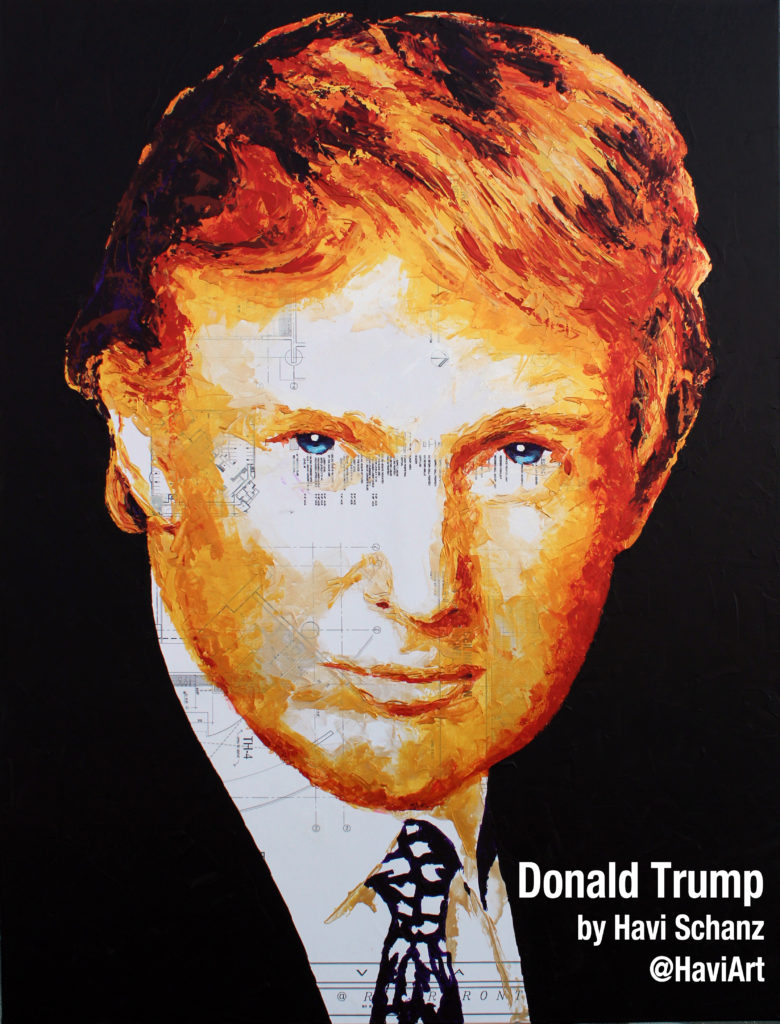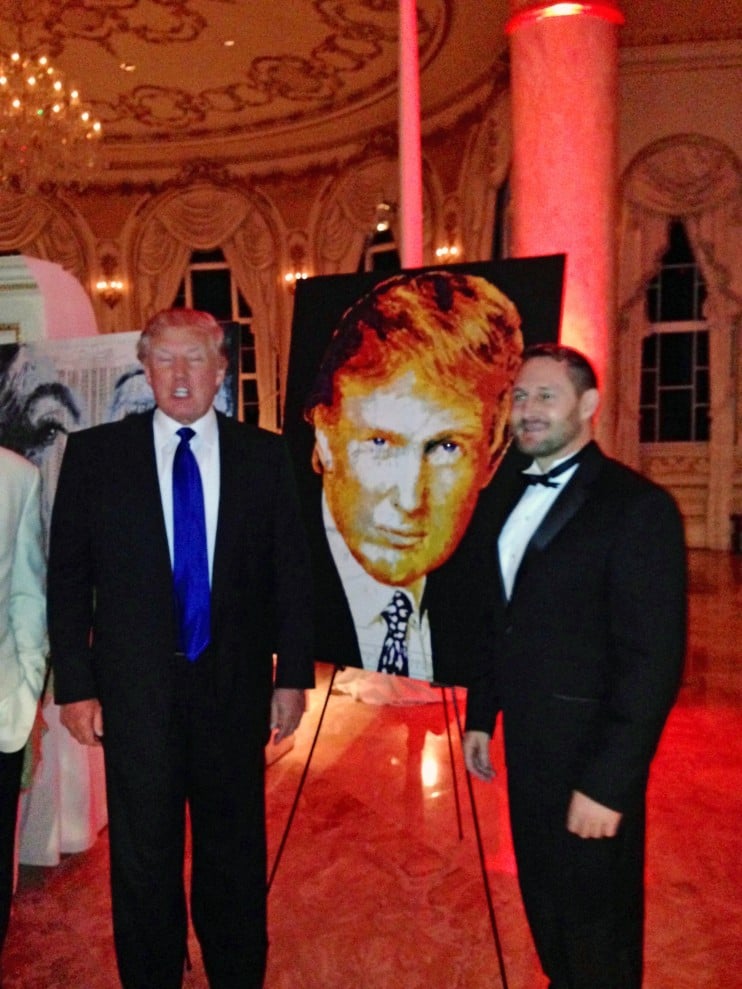Politics
Donald Trump Bought His Portrait with Charity Money Again, and This Time There Are Photos
Trump bought this portrait of himself for $10,000 in foundation money.

Trump bought this portrait of himself for $10,000 in foundation money.

Sarah Cascone

As the presidential election heats up ahead of the first debate on September 26, candidates Donald Trump and Hillary Clinton have seen increased scrutiny from the media. Yesterday, as part of a larger exposé on Trump’s use of $258,000 from his charity, Washington Post’s David A. Fahrenthold revealed that the billionaire purchased not one but two portraits of himself using funds from the Trump Foundation.
The second purchase came at a 2014 charity gala held at Trump’s Mar-a-Lago estate in Palm Beach, Florida. According to the Post, Trump shelled out $10,000 for the portrait of himself by Argentinian artist Havi Schanz, who lives and works in Miami. The four-foot-tall canvas was painted on top of an architectural drawing in acrylic, and depicted a younger version of the real estate magnate.
“I painted him for a cover of a magazine who [wrote] a note about my art,” wrote Schanz in an email to artnet News. He donated the work, along with a painting of Marilyn Monroe, to the Unicorn Children’s Foundation, and he was not aware that Trump had paid for the work with charitable funds.

Havi Schanz and Donald Trump with his portrait Donald Trump at a 2014 charity auction. Courtesy of Havi Schanz/@HaviArt.
“He asked me about about the painting,” Schanz told the Post. “I said, ‘I paint souls, and when I had to paint you, I asked your soul to allow me.’ He was touched and smiled.”
According to the Post, Trump’s staff is currently unaware of the whereabouts of the painting, which was reportedly handed over to the staff at the Mar-a-Lago.
The tale is remarkably similar to previously reported accounts of a 2007 charity auction at Mar-a-Lago, where Melania Trump bid $20,000 for a speed painting of her husband created on the spot by Michael Israel. The six-foot-tall work was also created with foundation money earmarked for charity.
Meanwhile, the Trump campaign has again come under fire for a tweet by Donald Trump Jr. featuring an anti-refugee meme equating those fleeing Syria to a bowl of Skittles. “If I had a bowl of skittles, and I told you just three would kill you. Would you take a handful? That’s our Syrian refugee problem,” it read.
The image unwittingly included a photograph taken by David Kittos, a former refugee who did not grant Trump Jr. permission to use the picture. He uploaded the image to Flickr in 2010 as an experiment with new equipment.

Donald Trump Jr.’s anti-refugee Tweet uses an image stolen from one-time refugee David Kittos. Screenshot courtesy of Twitter.
“In 1974, when I was six-years old, I was a refugee from the Turkish occupation of Cyprus so I would never approve the use of this image against refugees,” Kittos told the BBC. “This was not done with my permission, I don’t support Trump’s politics and I would never take his money to use it.”
On The Late Show With Stephen Colbert, the host noted that Trump Jr.’s math was incorrect, and that the conservative Cato Institute had recently found that the chance of being murdered in a terrorist attack by a refugee was just one in 3.64 billion.
Colbert also pointed out that the meme was copying a similar message shared by a feminist group that instead employed M&Ms—but “the Trump family prefers Skittles because there are no brown ones.”
The Wrigley Company, which makes Skittles, noted a contradiction in Trump Jr.’s message. “Skittles are candy,” it wrote in an official statement. “Refugees are people. We don’t feel it is an appropriate analogy.”